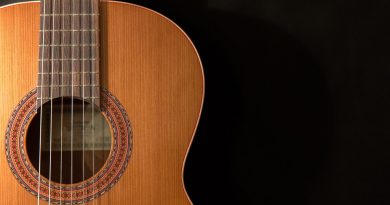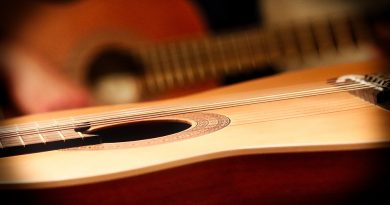Unlock the Secret to Playing Modal Chords on Guitar
Unlock the Secret to Playing Modal Chords on Guitar
Modal playing on the guitar is a technique that allows you to create unique and evocative chord progressions by exploring the different modes of the major scale. By understanding the theory behind modal playing and how to apply it on the guitar, you can unlock a whole new world of musical possibilities. In this article, we will take a look at the basics of modal playing, how to construct modal chords, and some tips for incorporating modal chords into your playing.
Understanding the Modes
Before we dive into how to play modal chords on the guitar, it’s important to have a basic understanding of the modes. The modes are scales that are derived from the major scale by starting on a different note within the scale. Each mode has its own unique sound and character, allowing you to create a wide range of emotions and moods in your music.
The modes are as follows:
1. Ionian – This is the standard major scale, starting on the first note of the major scale.
2. Dorian – This mode has a minor sound and is built by starting on the second note of the major scale.
3. Phrygian – This mode has a Spanish or exotic sound and is built by starting on the third note of the major scale.
4. Lydian – This mode has a dreamy and ethereal sound and is built by starting on the fourth note of the major scale.
5. Mixolydian – This mode has a bluesy feel and is built by starting on the fifth note of the major scale.
6. Aeolian – This mode is the natural minor scale, starting on the sixth note of the major scale.
7. Locrian – This mode has a dark and unstable sound and is built by starting on the seventh note of the major scale.
Constructing Modal Chords
To create modal chords on the guitar, you will need to understand the chord formulas for each mode. These formulas dictate which chords are diatonic to each mode and can help you create chord progressions that fit the modal sound you are going for.
Here are the chord formulas for each mode:
1. Ionian – Major 7, Minor 7, Minor 7, Major 7, Dominant 7, Minor 7, Minor 7b5
2. Dorian – Minor 7, Minor 7, Major 7, Dominant 7, Minor 7, Minor 7b5, Major 7
3. Phrygian – Minor 7, Minor 7b5, Major 7, Minor 7, Dominant 7, Major 7, Minor 7
4. Lydian – Major 7, Dominant 7, Minor 7, Minor 7, Major 7, Minor 7, Minor 7
5. Mixolydian – Dominant 7, Minor 7, Minor 7, Major 7, Minor 7, Minor 7b5, Major 7
6. Aeolian – Minor 7, Minor 7b5, Major 7, Minor 7, Minor 7, Major 7, Dominant 7
7. Locrian – Minor 7b5, Major 7, Minor 7, Minor 7, Major 7, Dominant 7, Minor 7
Tips for Incorporating Modal Chords into Your Playing
Now that you understand the basics of modal playing and how to construct modal chords, it’s time to start incorporating them into your playing. Here are a few tips to help you get started:
1. Start by practicing the modes individually. Spend some time playing through each mode and getting familiar with its unique sound and character. This will help you identify the modal chords that work best for each mode.
2. Experiment with different chord progressions. Once you are comfortable with the modes, start creating your own chord progressions using modal chords. Try mixing and matching chords from different modes to create interesting and dynamic sounds.
3. Listen to and analyze music that uses modal chords. Pay attention to how other guitarists incorporate modal chords into their playing and try to emulate their techniques. This will help you develop your own unique style of playing modal chords.
4. Practice improvising with modal chords. Improvisation is a great way to explore the different sounds and textures of modal chords. Try playing over backing tracks in different modes and experiment with different scales and arpeggios to create melodic phrases.
5. Don’t be afraid to make mistakes. Modal playing can be challenging, but it’s important to keep pushing yourself and trying new things. Don’t be afraid to experiment and make mistakes – that’s how you learn and grow as a musician.
In conclusion, playing modal chords on the guitar can open up a whole new world of musical possibilities. By understanding the modes, constructing modal chords, and incorporating them into your playing, you can create unique and evocative chord progressions that will take your music to the next level. So go ahead and unlock the secret to playing modal chords on the guitar – you won’t be disappointed.






